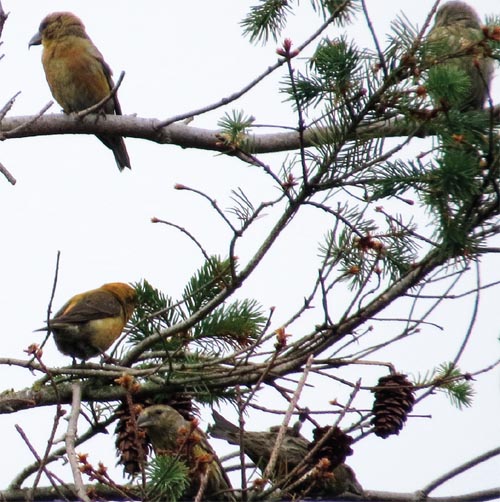| August
/ 2018 - Michael Ryan
|
|
It
was already very hot at eight o clock on one of those dead calm days
in the sweltering last week of June. As we made our way up towards
the top of Dalkey Hill we encountered two Painted Lady butterflies,
summer migrants who might have begun their journey south of the Mediterranean.
A few minutes later we came across some more summer migrants but these
were, unusually, summer migrants that come from the north rather than
the south We heard them before we saw them, that distinctive ‘chip,
chip’ call they make when flying, then we saw the flock passing
over with their characteristic bouncy flight. It was a flock of Crossbills
and, although some crossbills breed in Ireland, the flocks that arrive
in summer are nearly always what are known as ‘irruptive’
flocks who leave breeding grounds in Scandinavia when food is short
and head south in groups of varying sizes. Their name, unsurprisingly,
comes from their bill, whose top and bottom mandibles don’t
meet but end in opposing curves which can go either to the left or
right. |
|
|
As far as I know they are the only creatures that can access the seeds in Monterey Pines, the cones of which are like large wooden handgrenades (you really wouldn’t want one falling on your head!) and are even inaccessible to squirrels but no match for the crossbills powerful beak. As mentioned their call when in flight is a ‘chip chip’ sound but when they’re feeding in the trees they make a loud metallic trilling call. Three weeks later we heard a flock again, it flew over us, between thirty and forty birds and landed in the same area as before. This time we were lucky to get good views of the male birds among the flock, with lovely brick red blending into shades of orange plumage on their body and rump. The female’s plumage is green blending into yellow and unusually for a bird species individuals of both sexes can have variable colour schemes. We saw one male bird scolding away another and watched them high on the Douglas Fir branches, with one acrobatically hanging upside down to get at a fir cone.
|
||



